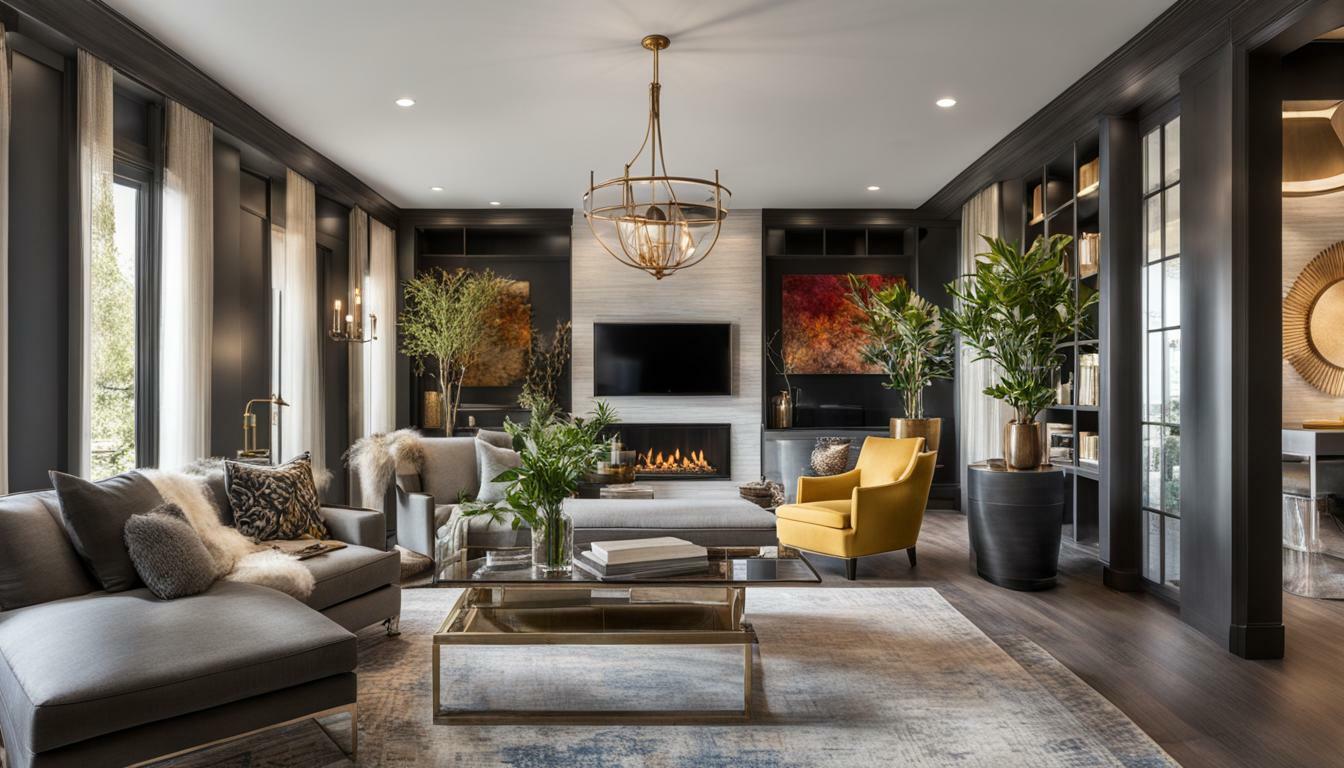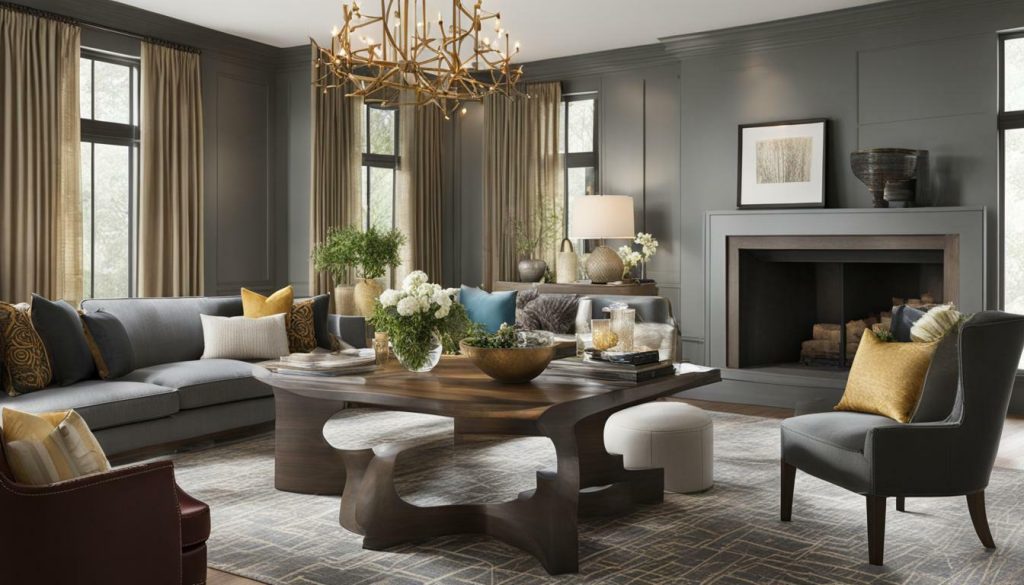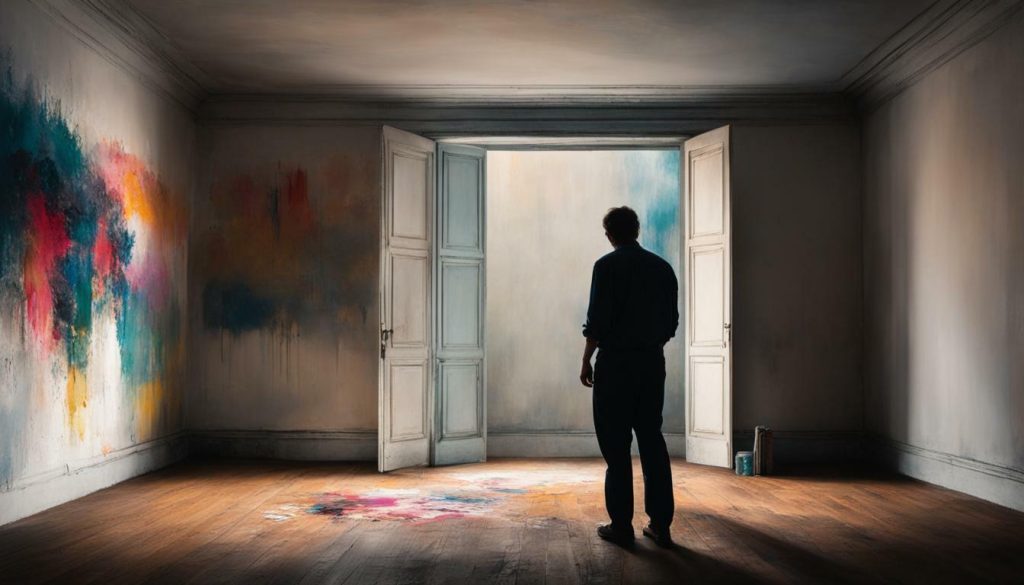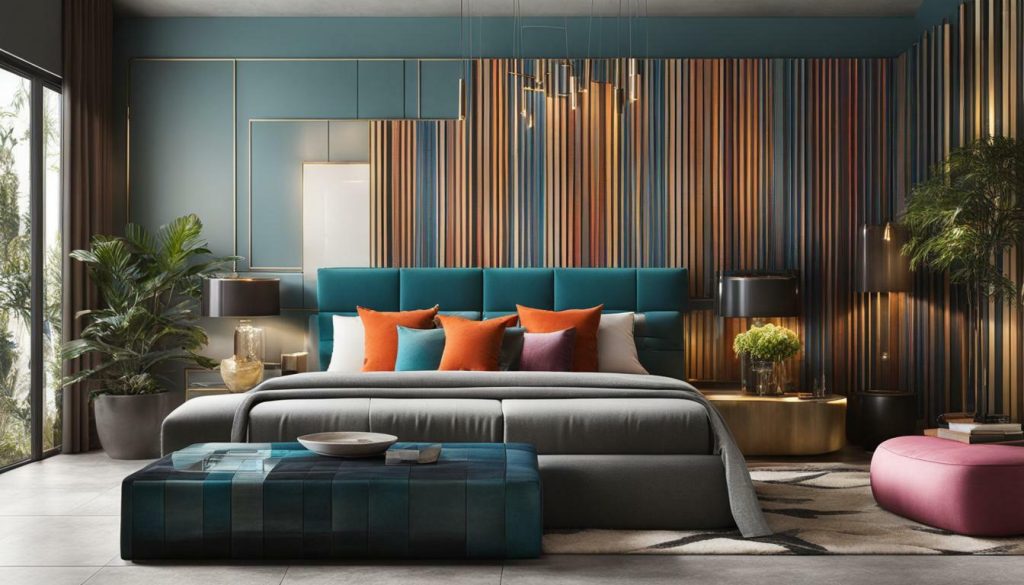
If you aspire to be a successful interior designer, it is crucial to continuously develop and refine your skill set. Interior design is a dynamic field that requires a combination of creativity, attention to detail, and an ability to predict trends. Additionally, having knowledge of sustainable practices, superior communication skills, sketching ability, computer knowledge, organization skills, and the ability to work effectively with contractors and other professionals is essential.
As an interior designer, investing time in studying, practicing, and continuing your education is key to expanding your portfolio and client base. By observing experienced designers and networking with industry experts, you can gain valuable insights and learn from their expertise. It is also important to find your own voice and style, incorporating digital technologies into your process to develop a unique and distinctive approach.
Understanding market trends is crucial in the interior design industry. Staying updated with the latest trends and incorporating them into your projects will ensure that your designs remain appealing and relevant to clients.
Building a professional portfolio is another significant aspect of advancing in the field of interior design. Your portfolio showcases your skills, creativity, and past projects, attracting potential clients and opening doors for career growth. Pursuing accreditation with professional interior design bodies, such as the Society of British and International Interior Design (SBID), can also enhance your credibility and contribute to your professional development.
- Develop a specific skill set including a creative eye, attention to detail, and the ability to predict trends.
- Continuously learn and improve through studying, practicing, and continuing education to expand your portfolio and client base.
- Observe and network with experienced designers to gain valuable insights and enhance your skills.
- Find your own voice and style by incorporating digital technologies into your design process.
- Stay updated with market trends to ensure your designs remain relevant and appealing to clients.
- Build a professional portfolio to showcase your skills and attract potential clients.
- Pursue accreditation with professional interior design bodies to enhance credibility and professional growth.
Developing the Skill Set
As an interior designer, developing a strong skill set is crucial for advancing in your career and crafting exceptional spaces. To excel in this field, you need to possess a creative eye with attention to detail, the ability to predict and identify trends, knowledge of sustainable practices, superior communication skills, sketching ability, computer knowledge, organization skills, and the capability to work seamlessly with contractors and other professionals.
To become a successful interior designer, it is essential to continuously enhance your skills and stay updated with industry advancements. By dedicating time to studying, practicing, and pursuing continuing education opportunities, you can expand your portfolio and attract a wider client base. By expanding your knowledge and expertise, you can offer innovative and sustainable design solutions that meet the evolving needs of your clients.
One valuable way to develop your skill set is by observing and networking with experienced interior designers. By learning from those who have already achieved success in the field, you can gain valuable insights, gather inspiration, and stay abreast of current design practices. Establishing connections with industry professionals can open doors to collaborations and mentorship opportunities that further enhance your skill development.
| The Essential Skills for Interior Designers |
|---|
| 1. Creative eye with attention to detail |
| 2. Ability to predict and identify trends |
| 3. Knowledge of sustainable practices |
| 4. Superior communication skills |
| 5. Sketching ability |
| 6. Computer knowledge |
| 7. Organization skills |
| 8. Ability to work with contractors and professionals |
Equally important is finding your own voice and style as an interior designer. Embracing digital technologies and integrating them into your design process can help you develop a unique and distinctive approach. By leveraging the power of digital tools, you can create visually stunning presentations, collaborate with clients remotely, and streamline your workflow.
Understanding market trends is another crucial aspect of skill development for interior designers. By staying updated with the latest design trends, materials, and styles, you can offer design solutions that are both aesthetically pleasing and in demand. Keeping a finger on the pulse of the industry allows you to adapt to changing client preferences and maintain relevance in a competitive market.
To showcase your skills and attract potential clients, building a professional portfolio is essential. A well-curated portfolio that highlights your best work demonstrates your capabilities and expertise. Additionally, pursuing accreditation with professional interior design bodies like the Society of British and International Interior Design (SBID) can enhance your credibility, provide networking opportunities, and contribute to your overall career advancement.

By continuously developing and refining your skill set as an interior designer, you can unlock new opportunities, create breathtaking spaces, and establish yourself as a respected professional in the industry.
Continuous Learning and Improvement
As an interior designer, I understand the importance of continuously learning and improving my skills in order to stay ahead in this ever-evolving industry. By dedicating time to studying, practicing, and continuing my education, I can expand my portfolio and attract a wider client base. Here are some key strategies that I follow to ensure my continuous growth as an interior designer:
- Stay updated with the latest design trends: By keeping a close eye on market trends, I can offer fresh and innovative design solutions to my clients. This involves staying informed about new materials, color schemes, and technological advancements that can enhance the overall aesthetic appeal of a space.
- Seek inspiration from experienced designers: I find immense value in observing and networking with experienced interior designers. By studying their work and techniques, I can gain insights into their creative process and adapt them to suit my own style. This not only helps me develop my skills but also allows me to build a strong professional network.
- Embrace digital technologies: In today’s digital age, it is essential for interior designers to embrace technology and incorporate it into their design process. This includes using computer-aided design (CAD) software for creating detailed floor plans and 3D renderings, as well as utilizing virtual reality tools to provide clients with immersive design experiences.

By continuously learning and improving my skills, I can offer my clients the best possible design solutions and create spaces that truly reflect their needs and preferences. It is through dedication to my craft that I am able to expand my portfolio and attract a wider client base.
Summary:
To advance as an interior designer, it is crucial to continuously learn and improve. By staying updated with market trends, seeking inspiration from experienced designers, and embracing digital technologies, we can offer innovative design solutions to our clients. By investing in our education and constantly evolving our skills, we can expand our portfolio and attract a wider client base.
| Interior Designer Skill Development | Key Strategies |
|---|---|
| Stay updated with market trends | Offers fresh and innovative design solutions |
| Seek inspiration from experienced designers | Gain insights into their creative process |
| Embrace digital technologies | Incorporate technology into the design process |
Learning from Experienced Designers
Observing and networking with experienced interior designers is an invaluable opportunity for skill development in the world of interior design. By immersing ourselves in the work of those who have already established themselves in the industry, we gain insights, knowledge, and inspiration that can elevate our own design capabilities.
When observing experienced designers, it is crucial to pay attention to their thought processes, problem-solving techniques, and design strategies. By closely studying their work, we can understand how they approach different design challenges and achieve successful outcomes. We can learn new ways of thinking, gain exposure to different design styles, and expand our own creative repertoire.
Networking with experienced designers is equally important. Building connections and relationships within the industry can open doors to mentorship opportunities, collaborative projects, and even job prospects. Engaging in conversations and discussions with seasoned professionals allows us to tap into their wealth of knowledge and experience, while also showcasing our own skills and expertise.
Quotes from Experienced Designers
“The beauty of learning from experienced designers is that they have already made mistakes and learned from them. By observing their work and listening to their stories, we can avoid common pitfalls and fast-track our own growth.” – Jane Doe, Award-Winning Interior Designer
“Networking with experienced designers not only expands your professional circle but also exposes you to different perspectives and approaches. It’s an opportunity to exchange ideas, collaborate, and collectively push the boundaries of design.” – John Smith, Interior Design Industry Veteran
In summary, the path to skill advancement in interior design involves not only honing our technical abilities but also learning from those who have walked the same path before us. By observing and networking with experienced designers, we can accelerate our growth and development, gaining the insights and inspiration needed to craft spaces that leave a lasting impact.
| Key Takeaways: |
|---|
| Observing experienced designers allows us to understand their design strategies, problem-solving techniques, and gain exposure to different styles. |
| Networking with experienced designers opens doors to mentorship, collaborative projects, and job prospects. |
| Quotes from experienced designers highlight the benefits of learning from their mistakes and the value of networking in expanding professional circles. |

To truly excel as an interior designer, it is essential to find your own voice and style. This is what sets you apart from the competition and allows you to create unique and memorable spaces. In today’s digital age, embracing digital technologies is crucial in developing your signature style. By harnessing the power of software and online tools, you can experiment with different design elements, colors, and materials, allowing your creativity to flourish.
One of the key benefits of digital technologies is the ability to visualize your ideas before bringing them to life. Whether it’s through 3D rendering software or virtual reality tools, these technologies enable you to present your vision to clients in a more immersive and interactive way. This not only enhances their understanding of your design concepts but also instills confidence in your abilities as a designer.
When it comes to finding your voice and style, it’s important to remember that it’s a journey of self-discovery. Experiment with different design elements, explore various color palettes, and incorporate your personal interests and inspirations into your work. Don’t be afraid to take risks and push boundaries. Your unique perspective and individuality will shine through in your designs, attracting clients who resonate with your style.
Creating a Lasting Impression
As an interior designer, your goal is not only to create beautiful spaces but also to leave a lasting impression on your clients. By developing your own voice and style, you can create designs that evoke emotions and tell stories. Your ability to combine different elements and create harmonious compositions will set you apart as a skilled designer.
One way to develop your own style is to draw inspiration from various sources such as art, nature, fashion, and travel. The more diverse your influences, the richer and more unique your designs will be. Incorporate unexpected textures, patterns, and materials to add depth and interest to your spaces. Remember, your style should be a reflection of your personality and passions.
Ultimately, finding your voice and style as an interior designer is a continuous process. It evolves as you gain experience, learn from your mistakes, and explore new design trends. Embrace the digital technologies available to you, let your creativity flow, and create spaces that leave a lasting impact on those who experience them.

As an interior designer, staying ahead of market trends is crucial for creating fresh and appealing designs that resonate with clients. Market trends reflect the evolving preferences and demands of consumers, and understanding them allows designers to create spaces that are both beautiful and functional.
One key market trend in interior design is the increasing demand for sustainable practices. Designers who incorporate eco-friendly materials, energy-efficient technologies, and sustainable design principles into their projects are more likely to attract environmentally conscious clients. Additionally, the use of sustainable practices can help create healthier indoor environments and reduce the environmental impact of design projects.
Another market trend in interior design is the integration of digital technologies into the design process. Advancements in technology have revolutionized the way designers visualize and present their ideas to clients. The use of 3D design software, virtual reality, and augmented reality allows designers to create immersive and interactive presentations that bring their designs to life. By embracing these digital tools, interior designers can better communicate their vision to clients and ensure a collaborative design process.

In summary, understanding market trends is essential for interior designers who want to stay relevant and meet the needs of their clients. By incorporating sustainable practices and embracing digital technologies, designers can create spaces that are not only aesthetically pleasing but also environmentally friendly and technologically advanced.
| Sustainable Practices | Digital Technologies |
|---|---|
| Use of eco-friendly materials | 3D design software |
| Energy-efficient technologies | Virtual reality |
| Sustainable design principles | Augmented reality |
Key Takeaways:
- Interior designers should pay attention to market trends to create appealing designs.
- Sustainable practices are in demand, so incorporating eco-friendly materials and energy-efficient technologies is important.
- Digital technologies like 3D design software and virtual reality aid in design visualization and communication.
Building a Professional Portfolio
As an interior designer, building a professional portfolio is an essential step in advancing your career. A well-curated portfolio showcases your skills, expertise, and unique design style, attracting potential clients and opening doors to new opportunities. It is a visual representation of your work that allows you to showcase your best projects and demonstrate your ability to create stunning and functional spaces.
When creating your portfolio, it is important to include a variety of projects that highlight different styles, scales, and design challenges. This demonstrates your versatility as a designer and shows potential clients and employers that you can handle different types of projects with ease. Make sure to include high-quality photographs or renderings of each project, along with a brief description that highlights the design concept and any notable features.
Additionally, consider pursuing accreditation with professional interior design bodies such as the Society of British and International Interior Design (SBID). These organizations provide recognition and enhance your credibility as a designer. Being a member of a professional body can also provide networking opportunities and access to industry events and resources, further advancing your career.
Remember, your portfolio is a reflection of your skills and expertise, so it is important to regularly update and refresh it as you complete new projects. Continuously assess and refine your portfolio to ensure it accurately represents your growth as a designer and aligns with current market trends.
FAQ
What skills should interior designers possess to advance in their career?
Interior designers should have a creative eye with attention to detail, the ability to identify and predict trends, knowledge of sustainable practices, superior communication skills, sketching ability and computer knowledge, organization skills, and the ability to work with contractors and other professionals.
How can interior designers enhance their skills?
Interior designers can enhance their skills by observing and networking with experienced designers, finding their own voice and style, embracing digital technologies, understanding market trends, and building a professional portfolio.
What are the three principles of interior design that designers should concentrate on?
The three principles of interior design that designers should concentrate on are style, focal point, and balance.
How can interior designers continue their education?
Interior designers should focus on studying, practicing, and continuing their education to expand their portfolio and client base. They can also pursue accreditation with professional interior design bodies like the Society of British and International Interior Design (SBID).



